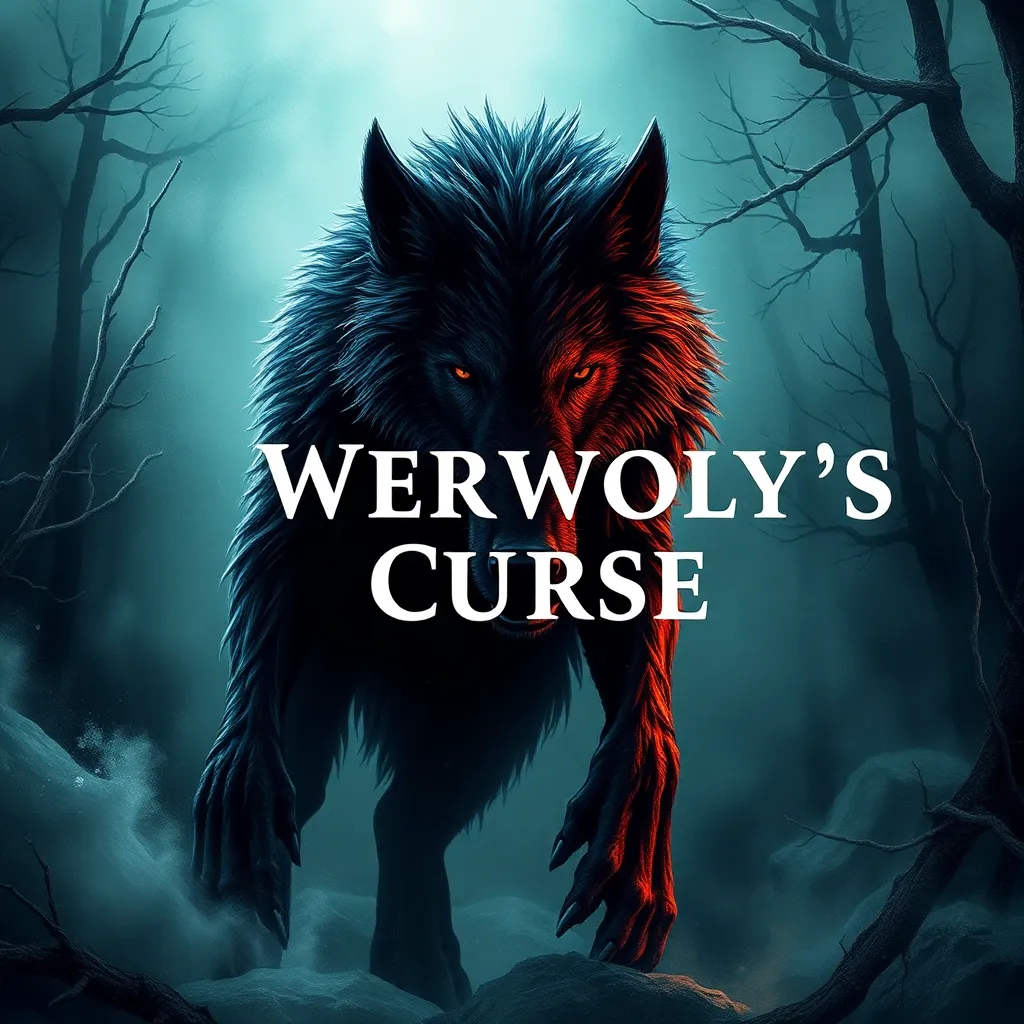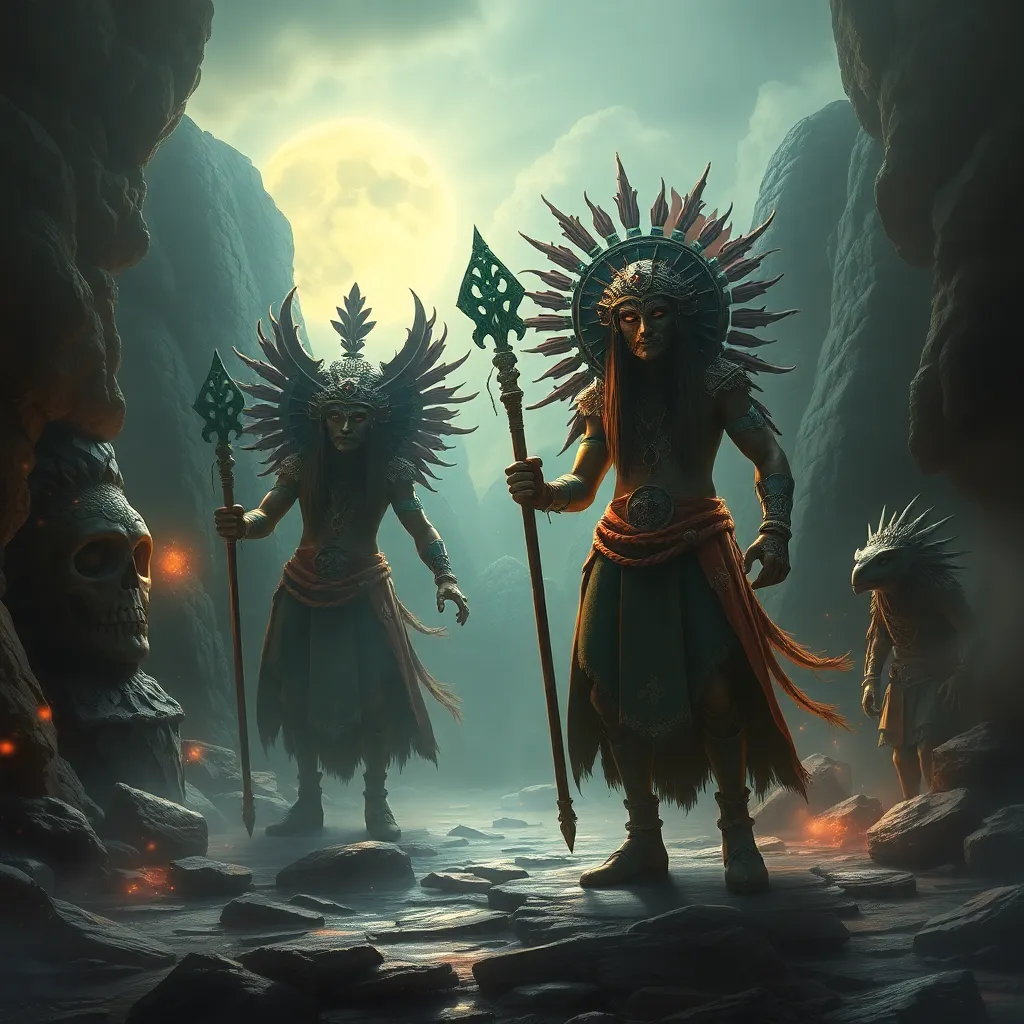The Werewolf’s Curse: Exploring the Nature and Origins of the Curse of Lycanthropy
I. Introduction
Lycanthropy, derived from the Greek words “lykos” (wolf) and “anthropos” (man), refers to the mythical ability of humans to transform into wolves or wolf-like creatures. This phenomenon, often associated with the werewolf mythos, has captivated human imagination across various cultures throughout history.
Werewolves have been a staple of folklore, appearing in tales from different parts of the world, including Europe, Africa, and Asia. The stories often depict a struggle between humanity and the primal instincts of the beast within. The purpose of this article is to explore the nature and origins of lycanthropy, delving into its historical context, the nature of the curse, and its cultural representations.
II. Historical Context of Lycanthropy
Lycanthropy has roots in ancient civilizations, where the concept of shapeshifting was intertwined with spiritual beliefs and mythology. Many cultures believed that certain individuals could take on the form of animals, including wolves, often as a result of divine intervention or curses.
- Ancient Civilizations: In ancient Greece, werewolves were often depicted in literature, such as in the myth of Lycaon, who was transformed into a wolf by Zeus as punishment for his impiety. Similarly, Norse mythology speaks of warriors known as “berserkers” who donned wolf skins and believed they could channel the strength of wolves.
- Folklore and Mythology: Folktales across Europe depict werewolves as cursed beings, often tied to witchcraft and supernatural forces. The legend of the “Wolfman” became particularly notable during the Middle Ages, leading to widespread fear and persecution.
Notable historical cases, such as the trials of werewolves in Europe during the 16th and 17th centuries, illustrate the blend of superstition and societal fears. Accusations of lycanthropy often resulted in witch hunts and executions, highlighting the dangerous intersection of myth and reality.
III. The Nature of the Curse
The interpretations of lycanthropy can be categorized into psychological and supernatural explanations. Historically, the supernatural aspect was predominant, with transformations attributed to curses, magical spells, or divine punishment.
- Psychological Interpretations: Modern psychology offers insights into lycanthropy, suggesting that the condition may manifest as a severe mental disorder, known as clinical lycanthropy, where an individual believes they can transform into a wolf.
- The Transformation Process: The transformation often described in folklore involves physical and psychological changes, typically triggered by the full moon. This transformation not only alters appearance but also unleashes primal instincts.
Symptoms of lycanthropy can include a strong desire to engage in predatory behavior, heightened senses, and even physical changes such as hair growth. The implications of such transformations raise questions about the nature of humanity and the thin line between civilization and savagery.
IV. Symbolism and Themes in Werewolf Lore
Werewolf lore is rich with symbolism, often reflecting the duality of human nature. The struggle between man and beast serves as a metaphor for internal conflicts and societal issues.
- The Duality of Human Nature: The werewolf represents the conflict between civilized behavior and primal urges, highlighting the constant battle within individuals to control their darker impulses.
- Metaphors for Societal Issues: The curse of lycanthropy can symbolize various societal issues, including addiction, mental illness, and the fear of losing control. The transformation into a beast can represent the loss of humanity in the face of societal pressures.
- The Role of the Full Moon: The full moon is a recurring motif in werewolf mythology, often linked to the timing of transformations. It serves as a symbol of change and the cyclical nature of life.
V. Cultural Representations of Werewolves
Werewolves have been depicted in various forms of literature and film, evolving with the times while retaining core themes. From classic literature to modern cinema, the werewolf continues to fascinate audiences.
- Literature: Works such as “The Werewolf” by Clemence Housman and “The Wolfman” by George Waggner have contributed to the literary canon of werewolf tales, often exploring themes of identity and transformation.
- Film: The portrayal of werewolves in film has ranged from horror to comedy, with notable examples including “An American Werewolf in London” and “Twilight,” showcasing the adaptability of the werewolf myth in pop culture.
- Variations Across Cultures: Different cultures have their unique interpretations of werewolves, such as the “Aswang” in Filipino folklore or the “Skinwalkers” in Native American myths, each with distinct characteristics and narratives.
VI. Scientific and Psychological Perspectives
Modern science provides possible explanations for beliefs in lycanthropy and the phenomena associated with it. Clinical lycanthropy is a rare psychiatric syndrome where individuals believe they can transform into animals, often linked to severe mental disorders.
- Genetics and Biology: Some researchers explore the genetic basis for certain traits associated with werewolves, examining how myths may have originated from real-life fears and behaviors.
- Psychological Disorders: Disorders such as schizophrenia and dissociative identity disorder can lead individuals to experience delusions of transformation, blurring the line between myth and reality.
VII. The Legacy of the Werewolf Myth
The legacy of werewolf legends continues to thrive in contemporary culture, influencing horror genres and popular media. The fascination with werewolves persists, capturing the imagination of new generations.
- Impact on Horror Genres: Werewolves play a significant role in the horror genre, often serving as symbols of fear and the unknown, reinforcing societal anxieties about the duality of human nature.
- Modern Fascination: In modern society, werewolves are often romanticized, portrayed as misunderstood anti-heroes in films and literature, reflecting evolving societal attitudes towards monsters and the concept of the “other.”
- Evolution of the Narrative: The narrative surrounding werewolves has evolved from fear and superstition to themes of empowerment and identity, showcasing the adaptability of the myth in contemporary storytelling.
VIII. Conclusion
In summary, the exploration of lycanthropy reveals a complex interplay of history, psychology, and culture. The werewolf myth serves as a reflection of humanity’s deepest fears and desires, encapsulating the struggle between civilization and primal instincts.
The enduring nature of the werewolf myth highlights its significance in understanding human fears and fantasies. As societies evolve, so too does the narrative of the werewolf, ensuring that this timeless legend remains relevant in our collective consciousness.




